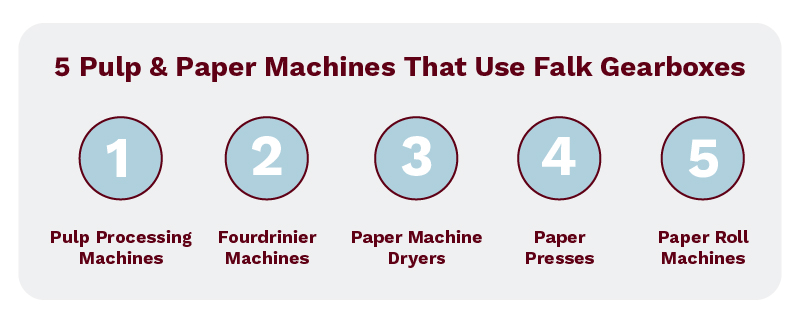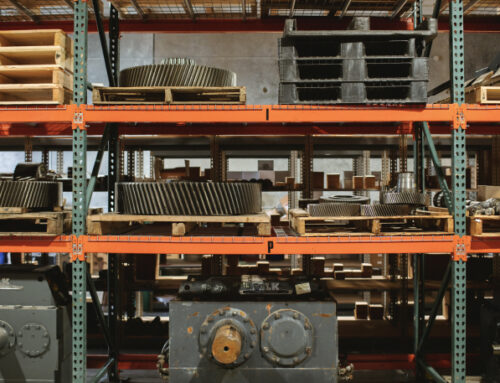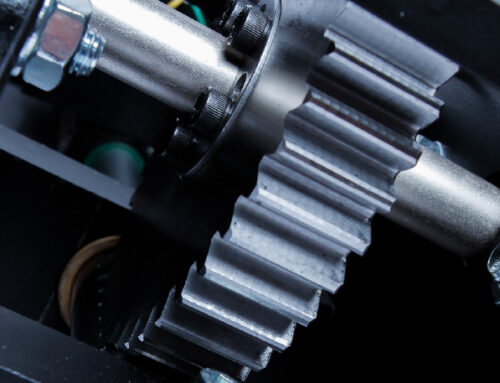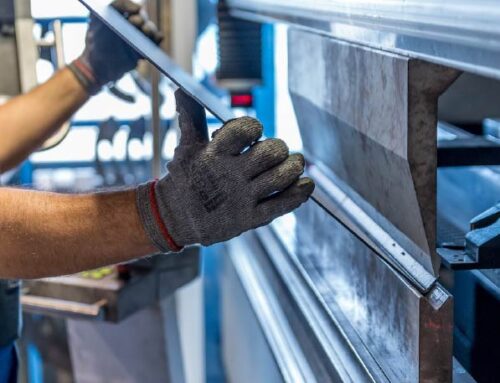Did you know that the global pulp and paper market is valued at more than $350 billion? To keep this massive industry running there’s an extensive network of parts manufacturers, material suppliers, and shipping companies that must work together in unison.
From processing raw wood fibers to printing glossy magazines, the pulp and paper industry could not function without rugged and durable gear reducers.
5 Pulp & Paper Machines That Use Gearboxes
The pulp and paper industry processes fibrous materials and recycled fiber into usable paper products. While the industry is primarily focused on processing wood fibers from trees, manufacturers also utilize leftover materials from sawmills and other timber-related industries.
No matter what the source of material might be, all pulp and paper processing equipment works towards the common goal of separating usable fibers from waste material and turning it into usable paper.
1) Pulp Processing Machines
Gearboxes are integrated into pulp processing machines that separate cellulose fibers from other materials.
Generally speaking, paper pulp machines use water, heat, and agitation to break fibers up into a usable pulp. Different temperatures and agitation processes are utilized depending on the type of fiber source material and desired end product.
After that, the pulp is extracted from the water and separated from impurities using a large vacuum machine.
2) Fourdrinier Machines
Most pulp and paper processing machines in use today are based on technology developed in the late 18th century. Named Fourdrinier machines, this technology processes raw pulp into usable paper all within a single machine.
In these machines, a conveyor-type belt made of wire or plastic allows excess water from the pulp mixture to drain. This process creates a sheet of material for further drying.
3) Paper Machine Dryers
During the drying process, machines reduce the amount of water in pulp from 95% to 5%. This phase begins by squeezing water out of the pulp using large rollers. Next, the pulp is moved into a drying cylinder where it is further dried using intense heat.
Gear drives are used throughout the drying process to power industrial rollers and help move materials from one phase to the next.
4) Paper Presses
Once dry, paper presses, also known as calendars, put the final touches on paper products before they are ready for distribution.
Before entering the calendar section, manufacturers often add chemicals or starch to the paper to enhance the overall quality. Next, the dry paper is placed under pressure and smoothed within the calendar in preparation for distribution and printing.
Industrial gearboxes help transfer paper from one phase of production to the next, while also aiding machines in applying the pressure needed to smooth materials.
5) Paper Roll Machines
The final step in the manufacturing process is for the finished paper to be coiled up into massive rolls.
Industrial gearboxes are integrated with a few different key paper roll machines in the manufacturing process. Common types of equipment used in this phase are suction rolls, cast iron rolls, and high-precision tube rolls.
After the paper is distributed from the manufacturing facility, industrial gearboxes also aid in the supply chain with printing, packaging, and more.
Connect With Our Industrial Gearbox Motor Suppliers Today
Due to the harsh environments of paper manufacturing facilities, it’s important that gear reducers perform at peak efficiency. To counteract the effects of elevated humidity, high operating temperatures, caustic chemicals, and dusty buildings, it’s critical that you partner with a leading gearbox repair service and supplier like NW Industrial Sales LLC.
Contact us today to learn more about our products and services.







